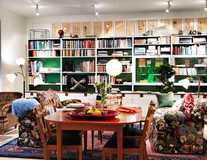Svenkst Tenn / Sweden
Top Tenn
Stockholm’s Svenskt Tenn has had its one and only homewares shop at the same location for 84 years. As Monocle discovers, a redesign of the iconic store hasn’t lost any of the homely charm of the firm’s idiosyncratic founder.
There are many stories about Svenskt Tenn’s furniture store on Strandvägen in Stockholm, which originally opened in 1927. One is about the expensive concave window that Estrid Ericson, the founder of the company, had specially delivered from London against everyone’s advice. She thought its intriguing form and ever-blooming flowers would make people stop in front of the shop – and then walk right in. And they did, too.
Another story is about the die-hard Svenskt Tenn fan (actually, there are quite a few of those stories) who came in and wanted to buy an entire room exactly as it was in the shop. As Ulf Linde, one of Sweden’s most respected art critics has put it: Svenskt Tenn is much more than just a shop. It’s a silent theatre production. It’s also a Swedish icon: few things are as recognised in Sweden as Svenskt Tenn’s bold patterns, wooden dining tables and soft easy chairs with rounded edges.
But however beloved the store has been, it has also been too small to display Svenskt Tenn’s range of products in an optimal way and, with its many levels and rooms, difficult to navigate. When the company got the chance to move its offices and stock storage to Telefonplan outside the city centre in 2010, they decided to redo the interior for the first time in 35 years, in order to modernise the store and get more retail space. Renovating the shop turned out to be a somewhat intimidating task.
“People were afraid of remodelling the store, because everyone was very careful about retaining this magical world that Estrid created,” says Svenskt Tenn’s in-house interior designer Martin Edvardsson. “We didn’t want a typical department store with white marble floors and sterile lighting. We wanted to take good care of the interior, rather than transform it.”
When Monocle visits, painters and carpenters are still putting the last touches to the interior, but there’s no doubt that the team behind the renovation can now breathe out and enjoy the results of almost two years of hard work. Thommy Bindefeld, marketing manager at Svenskt Tenn, joined the company in 2008 and was assigned the task of planning the renovation. He and the rest of the team hired HMKM, a British architectural practice specialising in retail, to be in charge of the design work. Why trust British architects with the task of renovating a Swedish icon? “They were not coloured by our heritage,” explains Bindefeld. “In Stockholm, people have a clear picture of the company. That can be a disadvantage, even though historical references naturally are extremely important. They were freer to work with the space.”

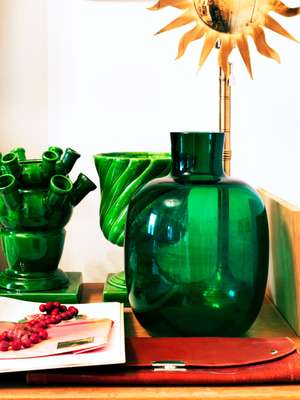
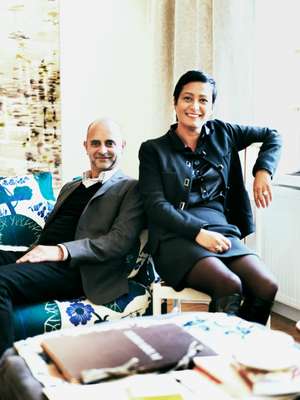
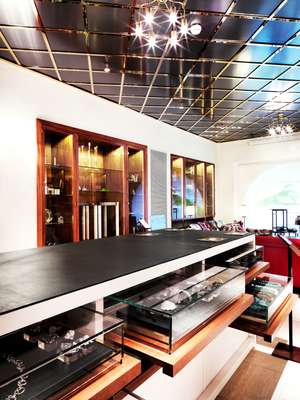
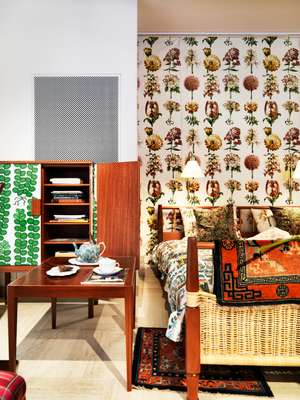
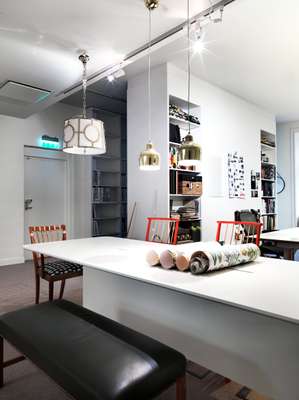
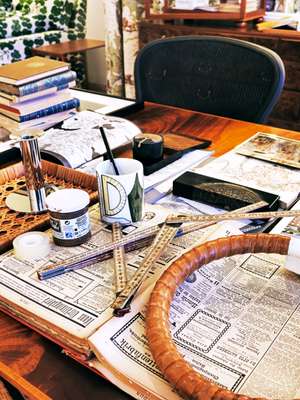
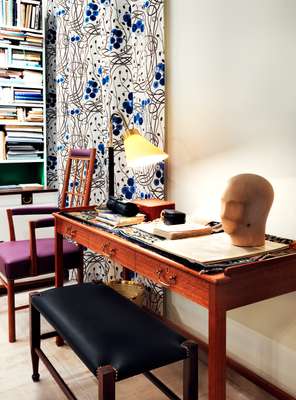
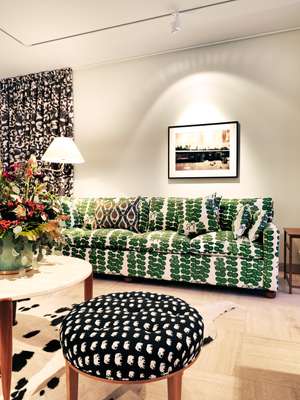

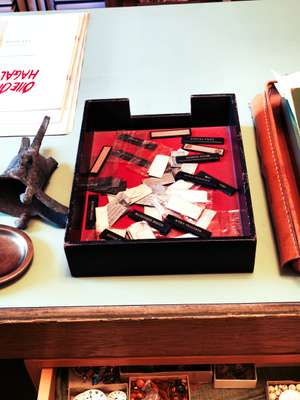
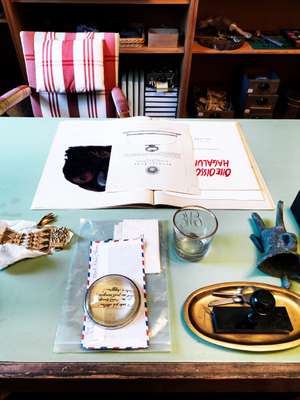
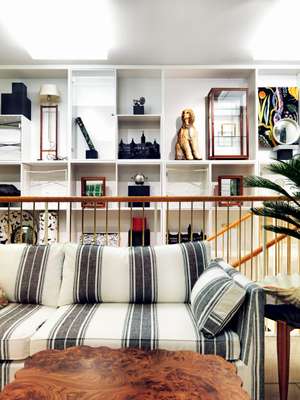
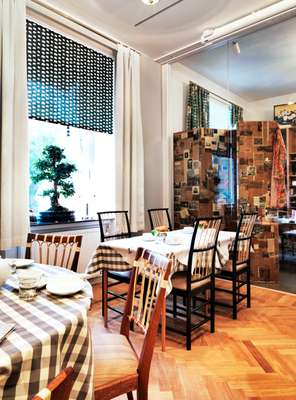
The architects at HMKM read extensively about Svenskt Tenn’s history and studied pictures from the company’s early days. The company has its own archive at the Swedish National Heritage Board, comprising thousands of photographs, as well as drawings and prototypes by Josef Frank, the Austrian-born architect behind most of the company’s classic products. Reference pictures from the original store, designed by Uno Åhrén, served as models for several features in the new store.
“One example is the pewter-brass roof in the pewter salon,” says Bindefeld. “That was in the original shop, but it was torn down in the 1970s. Now we’ve rebuilt it, based on the archives.” Tenn is Swedish for pewter, and when Ericson originally started the company, she worked mostly with that material. In the new salon, the company’s extensive collection of pewter objects and jewellery is displayed.
In many parts of the store, floors have been lowered, stairs removed and walls torn down to create a more accessible and lighter space. The upper floor, which was previously reserved for offices, has been opened for retail, and a tea salon now serves customers looking for a drink or a light lunch. Still, the space has kept its charming feel, the travertine floors and the white walls that make the objects themselves stand out. Much of the store has been retained, or returned to its former glory.
One room that took a lot of detailed research was Estrid Ericson’s office, which has been recreated and opened for the public to view – if only through a glass wall. Per Ahldén, Svenskt Tenn’s own curator, helped the team in finding relevant pictures and original details with which to fill the former manager’s drawers and bookshelves.
“Estrid worked here every day between 1934 and 1981. The furniture had been left here, but the smaller objects were gone – so we’ve brought in things that she liked and collected, such as corals, shells and Chinese vases. She loved mixing cultures,” Ahldén says.
Mixing is a key word in Svenskt Tenn’s interior design philosophy. The company was a pioneer in displaying entire rooms in its store, thus offering a way of furnishing any room in the home – even a way of life, some would say. The building blocks of the style are quality furniture, a mixture of old, new, expensive and cheap objects, and – above all – a relaxed attitude towards the home, with the people at the centre. Frank and Ericson called the style “accidentism” or “happy chances philosophy”.
Karin Södergren, one of the company’s two in-house stylists, says that the biggest challenge in decorating the store has been achieving that home-like atmosphere. “A home is always built gradually. Here, we built everything at the same time – but the place still has to feel like it has evolved organically.”
As interior decorating tastes have moved away from the austerity of the past decade towards a less coordinated, more individualistic style, Svenskt Tenn is experiencing a revival. Timelessness and quality are the secrets behind its continuing relevance: a vast majority of the products are manufactured in Sweden, and many families pass on their furniture generation after generation. But the company also strives to stay fresh by commissioning new design. Around 80 per cent of the catalogue is by Josef Frank, while the remaining part consists of contemporary design.
“Even that is working in the spirit of Estrid Ericson,” says the company’s CEO Maria Veerasamy. “In her time, she worked with people like Bruno Mathsson and Torun Bülow-Hübe before they were famous.” Today, Svenskt Tenn has fans all over the world, and many of them will no doubt be making a pilgrimage to the new store – the only one of its kind.
“We are looking around to see if we could find a suitable location and open another store at some point,” says Bindefeld, “but expansion is not important in itself. When Estrid died, the company was left to a foundation – with the task of making sure that the company would continue to exist as it was created.”
Estrid Ericson, 1894 – 1981
Designer and art teacher Estrid Ericson founded Svenskt Tenn in 1924, investing the small inheritance she had just received from her father. Originally, she focused on designing objects in pewter, and sold them in a small store on Smålandsgatan. Her talents received recognition quickly: in 1925 she won a gold medal for design at the World Exhibition in Paris.
Ericson’s reputation grew, and in 1927 she was able to move to a bigger location on Strandvägen 5, the address where the store still operates today. “Estrid was fascinated by Strandvägen, this beautiful street leading to Djurgården,” says the company’s CEO Maria Veerasamy. “It wasn’t a business street, but she felt she could make it work.”
By this time Ericson had already expanded her design interest from pewter to interior design. The defining moment came in 1934, when Ericson began working with Josef Frank, an Austrian architect who had just moved to Sweden. Together, the duo created a highly personal style with a combination of Viennese elegance and Swedish functionalism, introducing brightly patterned fabrics and mixing objects from both high and low cultures. His strength was the vision of humane Modernism; hers the eye for presentation and entrepreneurship.
Ericson died in 1981. Neither she nor Frank had any children, and the families are no longer involved in the business. Today, the company is owned by Kjell and Märta Beijer’s Foundation.
Five Tenn objects
In connection with the re-opening of the store, Svenskt Tenn is releasing close to 50 new, or relaunched, products. Monocle picked five of the best.
1.
Cabinet 522, Josef Frank Frank was inspired by British furniture when he designed the fabric-clad cabinet in 1934. The Celotocaulis textile gives your home a refreshing burst of green, Estrid Ericson’s favourite colour.
2.
Table, Eric Ericson The Swedish artist and writer Eric Ericson, known for his book ‘Letters to Society’, has created a limited edition of five tables for Svenskt Tenn. Each one has a pewter top with a unique engraving by the artist.
3.
Tote bag, Josef Frank Svenskt Tenn is famous for Frank’s brightly patterned fabrics, and carrying a bag is a popular way of incorporating them into your outfit. This tote bag is new to the selection.
4.
Pewter jars, Jakob Solgren Designer Jakob Solgren, currently doing his master’s degree at Stockholm’s University College of Arts, Crafts and Design, is one of Svenskt Tenn’s new talents. He has created a collection of jars inspired by the company’s history and Estrid Ericson’s love for gemstones.
5.
Pewter collier The company is releasing a 25-piece collection of pewter jewellery, which Ericson made famous in the 1940s. It includes colliers, earrings, bracelets, pendants and brooches.

